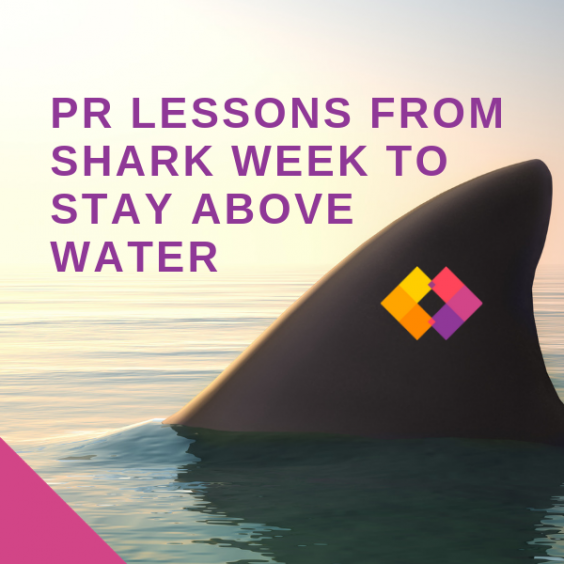France’s tech ecosystem is one of the most dynamic in Europe and is taking the lead in many sectors, such as Fintech and tech start-ups. In 2019, France’s fintech sector raised no less than 600 million euros. That same year, Paris overtook Berlin as having the most tech start-ups after a boost from Macron. This incredible progression will no doubt be slowed down by COVID-19, but as the economy resumes, so will France’s dynamic tech industry.
This expanding sector has at its core a number of key actors, including Venture Capital firms and a handful of highly specialised publications that act as the core of the French tech news and influencer industry. These outlets have seen, like in many other EMEA landscapes, their editorial teams shrink and much of the work outsourced to freelancers. Many have responded by inserting themselves into a wider media landscape in which SEO, blogs and social media are continuing to grow in importance. A good example of this is the blockchain industry, which has seen blogs (such as Journal du Coin) evolve into key opinion makers.
This shrinking of editorial teams has also resulted in many journalists becoming increasingly specialized while covering more topics, as well as an intense competition for their attention. Preparing high-quality content to ensure that it has the appropriate tone, format and messaging, while also providing accurate and informative insights, is now considered to be a basic necessity.
As you can see, when trying to navigate the French PR landscape, you will be faced with a number of potential pitfalls. The language may seem like the most obvious barrier, but it’ll be the least of your problems. This article will share some key facts and data points on French b2b tech influencers to help you better understand how the market is structured and what to consider when looking to invest in a PR campaign.
Promotion not attraction: give journalists something they need
Editorial teams are shrinking and this isn’t new or limited to France. This phenomenon has also been observed in the UK and Germany, as well as in most media landscapes. With less people in their teams, editors have had to rely on freelancers to keep up with content creation. This has two major consequences: freelancers don’t have any power over the editorial agenda, which means agencies are concentrating their pitching on fewer journalists. And those who do have power over editorial calendars are over-solicited on an ongoing basis.
Facing these trends, it has become critical for PR agencies to rethink how they approach publications. For example, shrinking editorial staff means fewer journalists are now covering more topics, and in order to produce quality content that will help them retain readership, they need to possess in-depth knowledge of the new topics they’re covering.
When it comes to pushing out content to the media, agencies need to think in terms of attraction rather than promotion. That release, byline or comment must not only be in line with the overall topics the journalist covers, but must also be a source of added value. The fact that a journalist covers cybersecurity won’t mean that he’ll be interested in every comment on ransomware. Be sure that your comment is adding to the debate. Simply stating that ransomware attacks “are bad and should be avoided” won’t break the headlines – or even make it to the headlines.
Furthermore, bring quality content to the right person to cut through the noise. This puts a major emphasis on agency work ahead of the pitching. In fact, I often mention to my clients that if the pitching takes more than 5 to 10% of the agency’s’ time, then something is wrong. This also means that content shouldn’t be pushed out every week unless it’s absolutely relevant. If you reach out once a week to the journalist to tell them about a partnership or an update of a side feature, the landscape is small enough that they will likely get annoyed and simply ignore your emails in the future.
So, it’s really all about putting quality ahead of everything, which will help journalists see you as a go-to resource. Victory will come the day they start dropping you emails asking for content…
The landscape has blurry borders
Although the core of the tech media landscape is shrinking, tech itself hasn’t vanished from the news. As more and more publications seek to expand their readership, we are seeing non-tech journalists cover tech-related topics that apply to their editorial line. For instance, real estate publications have increasingly covered how blockchain could disrupt financing in the construction industry. All publications seem to be taking the same direction. As such, when pitching tech topics, always have a look at their use cases. If a story applies to the automotive and health sectors, you’re sure to find a couple of journalists that will express interest. Nonetheless, this will be conditional to the possibility of finding actual use cases for these individual verticals that could be leveraged as hooks to the media.
This means that press lists aren’t always the most efficient way to reach out to the media. When I started in the PR industry, a senior member of a partner agency mentioned that the more experienced you get, the less you rely on tools and the more old fashioned you sometimes end up doing PR. You research topics and journalists sometimes one-by-one to ensure, for instance, that the agriculture journalist that covers tech (and that isn’t registered as such in your database) is on your pitching list. The landscape isn’t as siloed anymore, and its borders are rather like spectrums.
This can partly be explained by the fact that new isn’t news anymore and that journalists are looking for stories rather than facts. Something to always keep in mind when pitching, is how can this be positioned as a story? Sometimes the news is interesting, but needs to be positioned in a certain way. If not it won’t work. So be sure to understand what the story is behind each of your outreaches and who will be interested by it. If there’s no story, is it part of a wider story?
For example, a product release as a standalone announcement won’t get much traction, but if positioned as part of a wider development strategy, it may be of interest to journalists who cover corporate news. On the other hand, if it isn’t part of either, then is it worth sending in the first place? Also, relevant news isn’t relevant to everyone. For all these reasons, non-tech journalists might end up covering tech subjects.
The French PR landscape is in the midst of a major transition. Far from disappearing, publications are adapting to a new role in which news isn’t distributed and consumed in the same manner. Publications are finding their places next to SEO and digital marketing practices. In this evolving landscape, raw information such as announcements can be accessed online via google or twitter and as such are of less and less relevance to the media. This kind of news circulates faster on the web and is accessible from the moment it is uploaded.
In this new landscape, journalists are discovering a new position as industry experts, with long-form research articles taking up a growing proportion of their time. Thus, they are looking for quality information that will add value to their work. Stories that explain how tech is rooting itself into our daily lives will also find an echo in wider verticals. The French media landscape is closer to a spectrum than a closed box, one that is, at its core, highly specialised and knowledgeable.
Are you looking to get hold of the French market? Or are you looking to implement a regional influencer program? Find out how the lorries can help by getting in touch at hello@rlyl.com or via our contact page.



